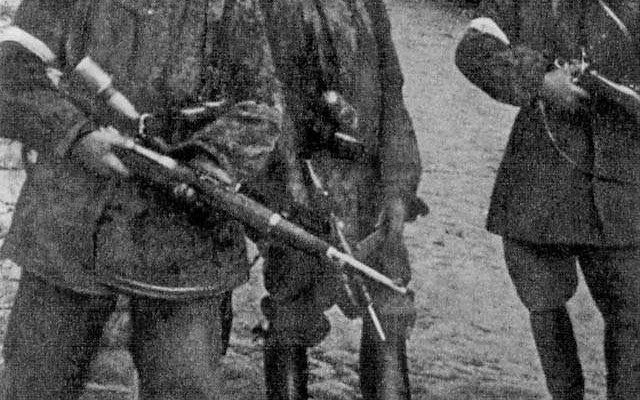When I was a teenager, my parents took my sister and me to the small town of Biella, in Piedmont, north-west Italy. There we met a small old man with wiry grey hair. He led us along the wall of the cemetery. Attached to the wall were small oval black-and-white photographs of young men whose ages ranged from around seventeen to thirty or so.
‘This was my best friend,’ the man said, pointing. ‘I went to school with him.’
He walked past the photos, still gesturing to them. He knew most of them: young men who had taken to the mountains in the struggle against fascism.
He told us the story.
It was towards the end of the Second World War. The partisans were looking for shelter for the night. A farmer offered his barn. Later, under the cover of darkness, the farmer informed the Germans who by this stage had reinforced the area in support of their Italian allies. The partisans were surrounded. In the morning, the Germans shot them. The bullet holes can still be seen on the barn’s stone walls.
Later, we were introduced to a woman. She was gregarious, quick to speak and to laugh. She was held in high regard because, during the war, she bravely took on the dangerous job of photographing the bodies of those murdered by the fascists.
Memories of Biella and its cemetery always return to me when I watch movies portraying the resistance movements of the Second World War.
There is a profound silence in Anglophone films about the nature of the largest and most successful of resistance movements, those in western and southern Europe: France, Italy, Yugoslavia and Greece. It seems discomfiting for filmmakers that these were led primarily by the political Left – in particular, the communist parties.
A common strategy for filmmakers is to choose other countries for locations and non-communist characters as agents. Hence a film like Defiance, in which the grim Daniel Craig leads a Jewish community in the Belarusian forests against not only the nearby Nazis but also the uncooperative Soviet partisans. Finely constructed though lacking in tension, Defiance gives us heroes who are stoutly independent of the morally dubious Soviets. It is a heavy-handed and overloaded film; its characters and narrative unable to breathe in the thick birch forests.
Defiance fits into a tradition that includes Escape from Sobibor, which documents risks, sacrifices and bravery in the story of the largest successful breakout from a Nazi death camp. Though the escapees are led by the dashing Sasha Pechersy, a Soviet soldier, the real focus of the film is the brave inmates of the Sobibor camp.
Schindler’s List makes an even less salutary choice. This troubling film – troubling, despite all the commendations it was awarded – elevates a Nazi collaborator who rescues (only when there is no risk to himself) a small number of Jewish prisoners from a labour camp. Any subtle irony in the film – any ambivalence towards its protagonist – is decisively destroyed by the final frames in which we are shown the real survivors saved by Schindler honouring him at his grave.
Even a film like Gillian Armstrong’s worthy Charlotte Gray, which depicts the eponymous character as an undercover agent, glosses over history. On their first meeting behind German lines, the male romantic lead Julien says to Gray, ‘We’re communists. Did they tell you this? … After the war, we are going to change things here.’
Later in the film, it appears the Allies betray the communists (as they did historically a number of times) but Armstrong prefers her film to cleave to the love story and this entire thread dissolves.
In the end, this filmic silence means not only that the history is inaccurately recorded but that many of the most interesting questions are avoided. Films about the left-wing resistance movements would confront altogether different issues: passive resistance versus armed resistance and terrorism; the place of communism in history; the close relationship of fascism and capitalism; the later attempts of the Allied forces to curtail these resistance movements.
Like Charlotte Gray’s Julien, the old man who took us to the cemetery in Biella was a former communist. Interestingly, a number of Australians had fought alongside him; they had been captured in the fighting in North Africa and interned in prisoner of war camps in Italy. From there they escaped to the Alps where they joined the resistance. Many of them became communists. Some waited for summer when they could walk over the Alps to Switzerland; others remained with the resistance until the end of the war.
One of them became a close friend of the old man. For many years the Australian brought his family back to Italy to visit his former comrades.
This later connection is not an uncommon story.
Hidden in the woods on the top of a hill, startlingly close to the village Ouroux in Burgundy where my father lives, are the remains of a resistance camp. Nearby, with the light cutting through the trees, is a picturesque cemetery. The most recent graves are those of English soldiers who had been parachuted in to support the resistance during the war. These soldiers had chosen to have their bodies returned to France when they died, an indication that they considered their support for the resistance the most meaningful part of their lives. Aren’t such stories worth recording in film?



